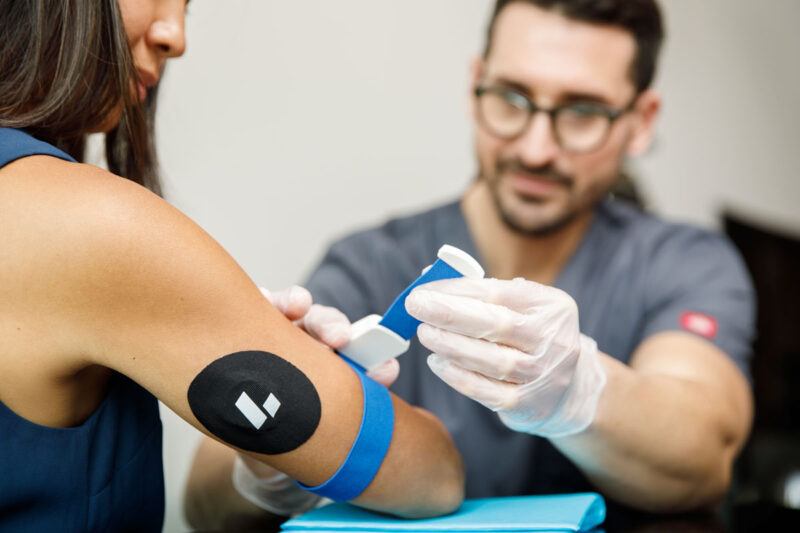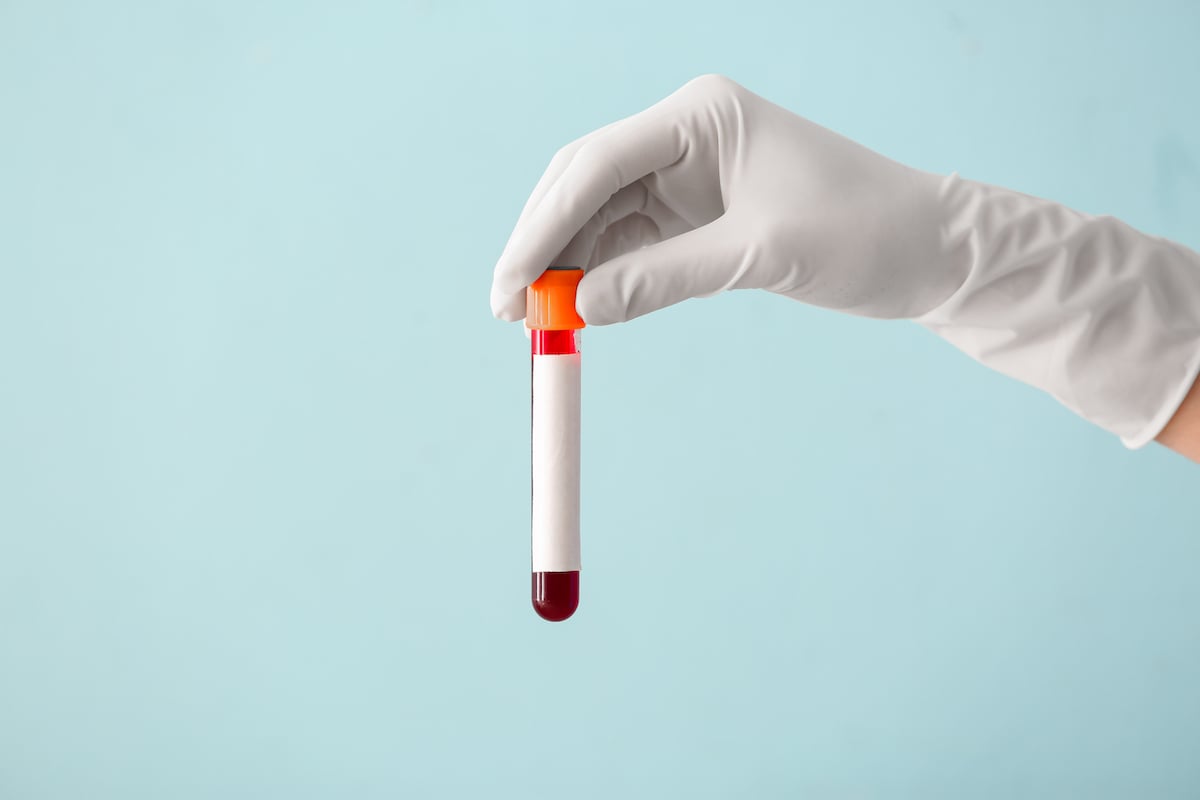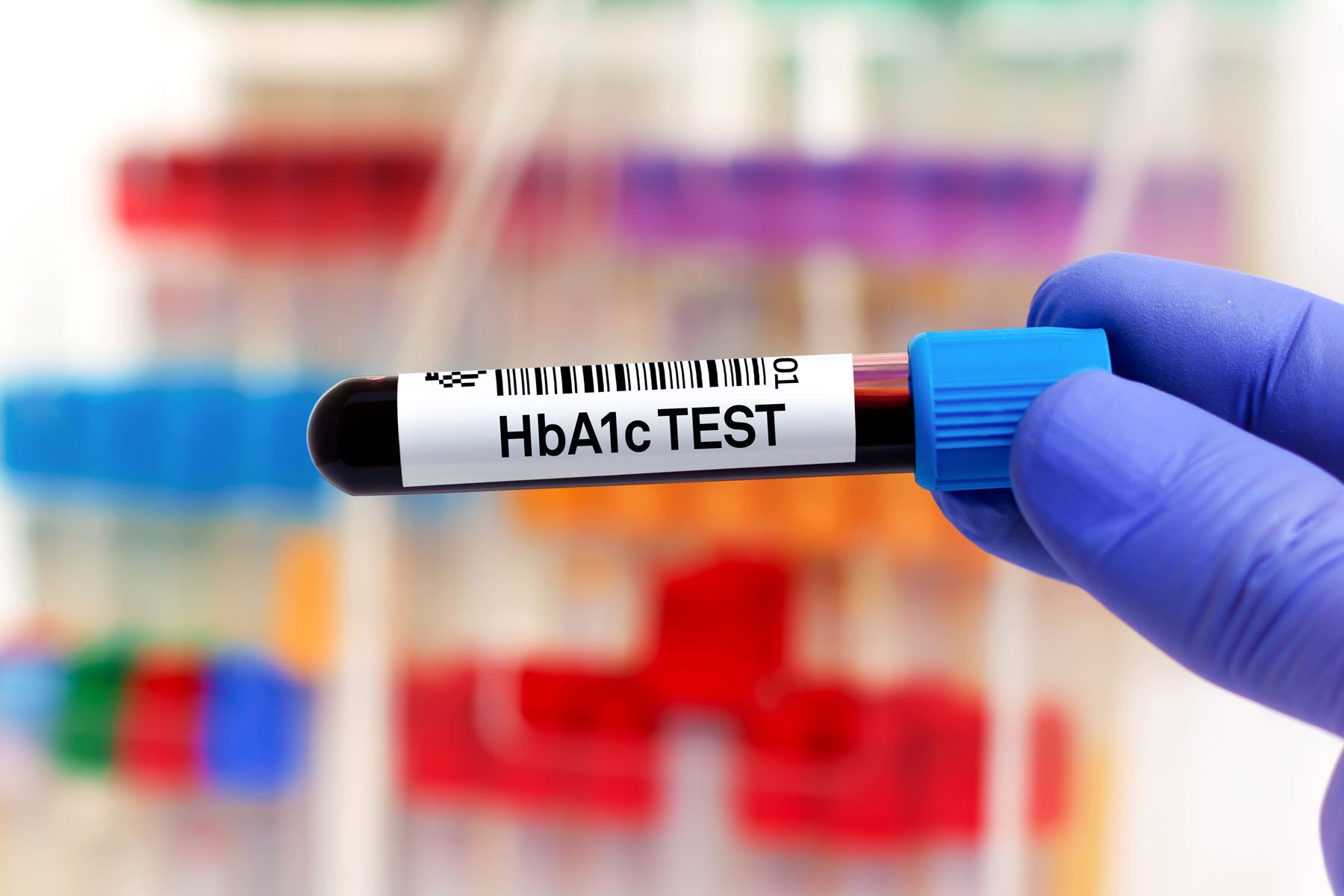Since its founding in 2019, Levels has focused on helping people understand the importance of blood sugar (glucose) as a health metric and giving people tools to measure and improve it. But we’ve also understood from the beginning that glucose alone is not enough for optimal metabolic health. You could live on bacon and vodka and have a stable glucose line, but that wouldn’t make you healthy!
That’s why in 2023, Levels implemented a new product offering, Levels Labs—an on-demand blood testing service that measures—and gives guidance in the app—around five key markers to give you a more holistic picture of:
- Cardiovascular health via ApoB and Triglycerides
- Insulin Resistance via Fasting Insulin
- Metabolic health via Uric Acid
- Glucose levels via HbA1c
The goal is simple: Make it easy for people to track long-term progress toward better health. Labs is a supplement to the day-to-day work you do with Levels to keep your glucose in a stable range and work toward lifestyle goals like a healthier diet, better sleep, and more exercise. The truth is that those daily factors will all influence these long-term markers, leading to overall better functioning and lower disease risk.
Why a blood test of these five markers?
First, while we’d love to be able to measure more substances with a wearable device like a CGM, the technology isn’t there yet, which means a blood test is the best way to assess biomarkers beyond glucose.
But most people only get blood tests once a year at their annual physical, and then only a handful of markers that mainstream medicine has agreed upon, like cholesterol and fasting glucose. What’s worse, most people are given little to no guidance around their results unless one is far out of range and already at or near a disease state. By then, reversing course—especially through lifestyle changes—is more challenging than if we catch any deviations as soon as they begin. We’d rather create habits that support ongoing optimal health than wait for disease to arrive.
So Labs had to meet two requirements:
Be convenient and inexpensive enough to be accessible to most members. There are many services available that will do extensive elective blood testing, often with dozens of markers. But this can be both costly and difficult to understand, especially because our bodies rarely present a clean narrative in data. What to do if this marker is high but an associated one is low?
So we partnered with Labcorp, the largest blood testing company in the US, to make it easy to schedule an appointment online and just show up at a local lab—no paperwork, no fuss. Once your order is in, LabCorp knows what to test and where to send results.
By focusing on five key markers, we’re able to keep costs down to just $99 per test.
Be simple to understand and action. We worked with our group of world-class leading metabolic health experts to distill the most crucial markers that people are unlikely to get at their normal physical. We then worked with those same advisors to create guidance around the results, so you’re not stuck asking Dr. Google what a particular number means. We show you where you are in relation to optimal levels and how you can improve. Results are also easy to share with your healthcare provider for additional guidance.
What Levels Labs measures
HbA1C
What is HbA1c?
The Hemoglobin A1C (HbA1c) test measures your average blood glucose over the past three months; based on the process by which glucose molecules attach to hemoglobin in red blood cells (which tend to live around three months). HbA1c is expressed as a percentage of hemoglobin molecules in the blood that have a glucose molecule bonded (or glycated).
Learn more about HbA1c here.
Why HbA1c matters
HbA1c is one of the last things to change with metabolic dysfunction. By the time HbA1c rises, this could be an indication of developing insulin resistance. HbA1c is the recommended diagnostic test for diabetes and pre-diabetes (it doesn’t require fasting or a glucose tolerance test and is less affected by acute perturbations like stress, nutrition, exercise, and smoking).
What are the causes of high HbA1c?
A high HbA1c can occur when someone has frequent high excursions in glucose or high average and fasting glucose levels. It’s worth noting that some people don’t turn over red blood cells at the same rate, which could lead to variable results for similar levels of glucose.
How to improve HbA1C
Dietary and lifestyle choices can help to lower HbA1c. Limiting processed foods, refined carbohydrates, and sugar can have a significant impact. Additionally, focusing on getting quality sleep, moving your body, and managing your stress can also help. Exercise doesn’t have to be high intensity—gentle, frequent movement like a 10-minute walk after a meal can have a substantial positive impact on glucose excursions. Studies have also found that narrowing your eating window with intermittent fasting can have metabolic benefits by giving your body an opportunity to metabolize stored glucose and fat and give the body a rest from ingested glucose.
Fasting Insulin
What is fasting insulin?
Insulin is the key hormone for maintaining stable glucose (among many other things). When you consume carbohydrates, the body secretes insulin to help shuttle glucose from the blood into cells for energy or storage. The fasting insulin test measures insulin levels unaffected by a recent meal.
Learn more about insulin here.
Why fasting insulin matters
Insulin affects every single cell in your body, including your bone, brain, muscle, and skin cells. Given the variety of purposes of these (and other) cells, it’s little surprise that insulin has some distinct actions across these tissues.
High fasting insulin may be an early way to catch the onset of insulin resistance, because the process of insulin resistance can start years before blood glucose levels begin to rise. As the body becomes more and more insulin resistant, it overcompensates by producing more insulin (resulting in high fasting insulin levels) that drives glucose into the cells, making glucose levels appear normal. This process can continue for years until dysfunction is so severe that the high insulin levels can’t compensate for the level of insulin resistance, and blood glucose starts to rise.
What are the causes of high fasting insulin?
High fasting insulin is caused by the process of insulin resistance, whereby the cells are less responsive to insulin’s signal, and the pancreas has to produce more insulin to overcome this block. Insulin resistance is caused by numerous things, including chronic over-nutrition (the body’s cells being overburdened by too much food to process), frequent elevations in blood glucose, and compounded by sleep deprivation, stress, sedentary behavior, and environmental toxins, amongst other contributors.
How to improve insulin
Dietary and lifestyle choices can help to lower fasting insulin. Limiting refined carbohydrates, and sugar can have a significant impact. Additionally, focusing on getting quality sleep, moving your body, and managing your stress can also help. Exercise doesn’t have to be high intensity—gentle, frequent movement like a 10-minute walk after a meal can have a substantial positive impact on metabolic health. Studies have also found that narrowing your eating window with intermittent fasting can have significant metabolic benefits by giving your body a chance to rest and allowing your insulin levels to lower.
Triglycerides
What are triglycerides?
Triglycerides are a type of lipid stored in fat cells when calories go unused. They are mainly carried through the blood by very-low-density lipoproteins (VLDL), which become LDL once they give up their triglycerides.
Learn more about triglycerides here.
Why triglycerides matter
High levels of triglycerides in the blood increase the risk for cardiovascular disease (CVD) by creating more dangerous plaques within the lining of blood vessel walls. With excess triglycerides, the plaque within the arteries is more likely to rupture, leading to an acute cardiovascular event, such as a heart attack or stroke.
What are the causes of high triglycerides?
High triglycerides are an indication of excessive energy consumption, mostly in the form of processed foods, sugar, and alcohol. Elevated triglycerides are often regarded as a marker of dietary quality, but other lifestyle factors such as lack of exercise, smoking, and excessive alcohol consumption can also contribute.
How to improve triglycerides
Dietary and lifestyle choices can help to lower triglycerides. Reducing overall carbohydrate consumption while increasing the proportion of proteins and healthy fats (especially Omega-3s) in your diet can have a significant impact. When you eat carbs, opt for foods with a lower glycemic index, avoiding highly processed options and added sugar. Heavy drinking has also been associated with high triglyceride levels. Research has consistently shown that exercise lowers triglyceride levels – even a single bout of intense aerobic exercise has been shown to reduce triglyceride levels the next day. Additionally, studies have found that losing a little weight can lower triglyceride levels.
Uric Acid
What is Uric Acid?
Uric acid is a breakdown product of nucleic acids, the building blocks of DNA (found in higher concentrations in meat), as well as alcohol and fructose (found in dietary sugar).
Learn more about Uric Acid here.
Why it matters
When uric acid is elevated, it can cause mitochondrial dysfunction, meaning problems with the parts of the cell that make energy from glucose, shunting the cells to store energy as fat. High uric acid is associated with cardiovascular disease, Type 2 diabetes, gout, kidney stones, coronary heart disease, stroke, high blood pressure, fatty liver disease, and Alzheimer’s disease.
What causes high Uric Acid?
Excess dietary purines (organ meats, liver, kidney, small fish), sucrose, fructose, high-fructose corn syrup, alcohol, and various medications can all contribute to elevated uric acid levels. Meats like beef, pork, and poultry also contain purines, but they are generally not as high in purines as organ meats and certain seafood like anchovies, sardines, and mackerel.
How to improve uric acid
Numerous dietary and lifestyle changes can help to lower elevated Uric Acid levels. Reducing consumption of sucrose (table sugar), fructose (present in most foods that taste sweet), alcohol, and purines (including organ meats, liver, kidney, and small fish) can all contribute to improved Uric Acid levels. While fruit in its whole form contains relatively little fructose, fruit juice provides excessive amounts of fructose and should be avoided. Moderation is also key— modern-day fruit is cultivated to be bigger and sweeter than was historically available, so it’s best to limit consumption to three servings per day.
ApoB
What is ApoB?
Apolipoprotein B-100 (apoB) is a protein attached to cholesterol particles in your bloodstream, known as lipoproteins. The particles that have an ApoB attached are more likely to cause atherosclerosis (plaque buildup in the arteries that narrows blood vessels). Therefore, by measuring the number of apoB proteins, we can measure the risk of heart disease.
Learn more about ApoB here.
Why ApoB matters
High levels of ApoB are associated with an increased risk of developing cardio-metabolic diseases, including heart disease. High rates drive atherogenic particles into the artery, which creates inflammation that can also lead to thickening or hardening of the arteries that can lead to stroke and heart attack. Traditional lipid tests like LDLc measure the concentration of cholesterol, which has been shown to be a less accurate predictor of heart disease since it is not the amount of cholesterol but the number of disease-causing particles that better predicts risk.
What are the causes of high ApoB?
Elevated levels of ApoB can be associated with insulin resistance, obesity, physical inactivity, smoking, and some medications. Genetic factors like mutations in the apoB gene (apoB100) are drivers for early-onset cardiovascular disease. In some cases, excess consumption of saturated fats and omega-6 fats can also lead to elevated apoB. Diets proportionally very high in fat have been shown to significantly increase ApoB.
How to improve ApoB
For people consuming a high-fat diet, lowering consumption of foods high in saturated fat and omega-6 in favor of foods high in omega-3, as well as increasing consumption of leafy greens, may help lower elevated ApoB.
 How to order Levels Labs
How to order Levels Labs
If you’re not yet a Levels member, you can order Labs during checkout when you join Levels (click here to get started). Levels members can order labs anytime directly from the app under the Labs section. Labs are $99 per visit, or you can buy a bundle of two Labs visits for $179.


 How to order Levels Labs
How to order Levels Labs






